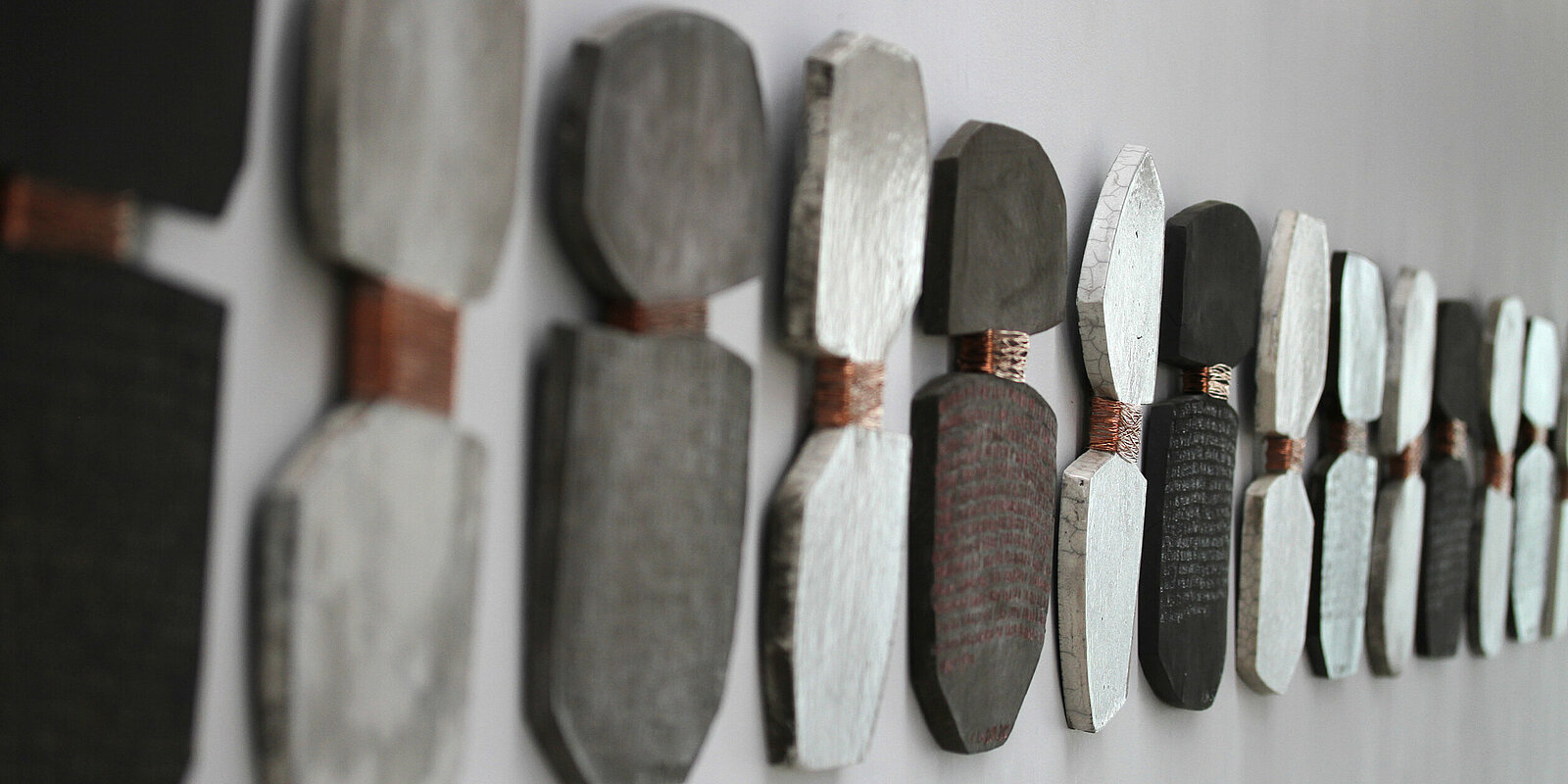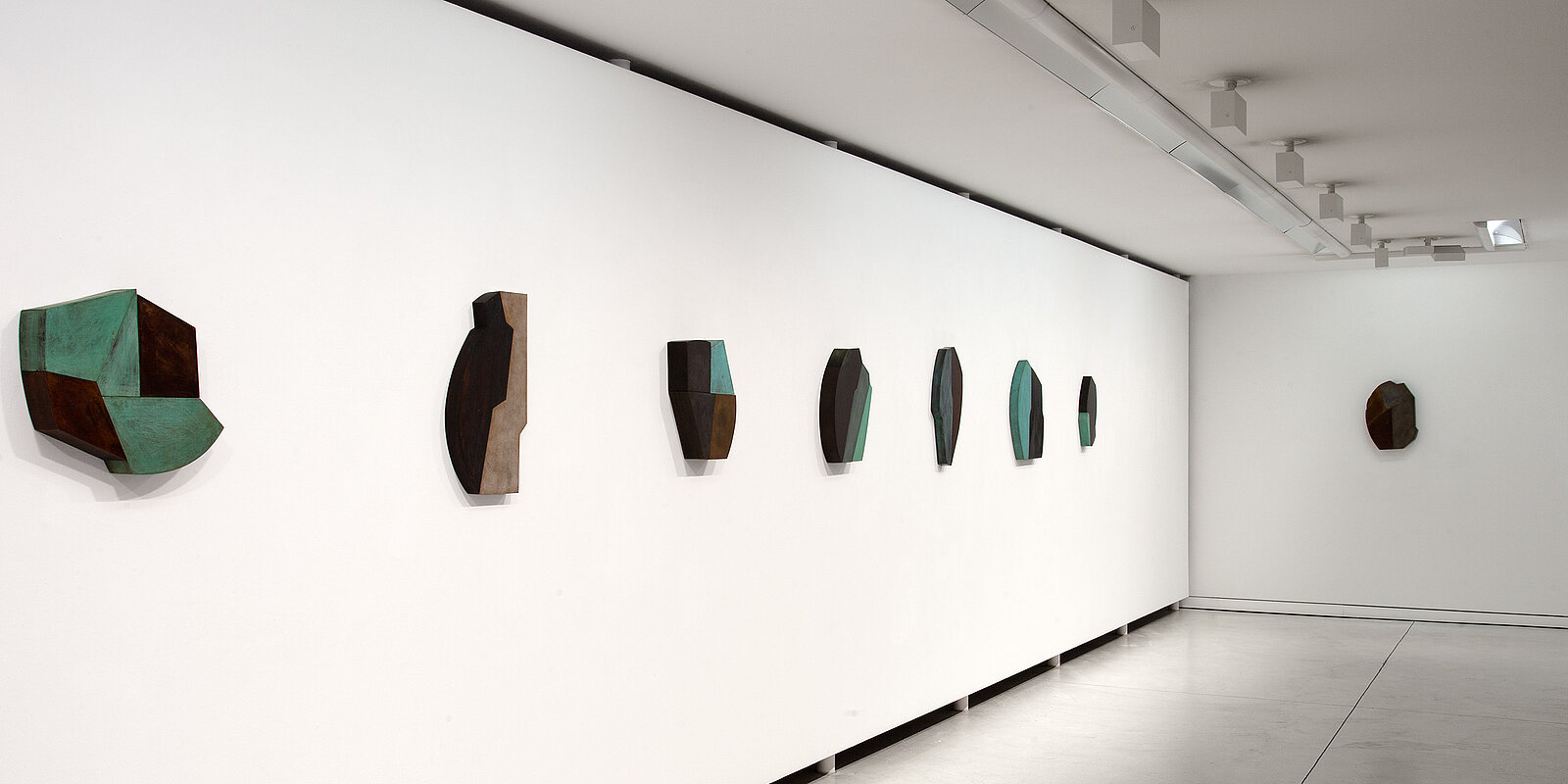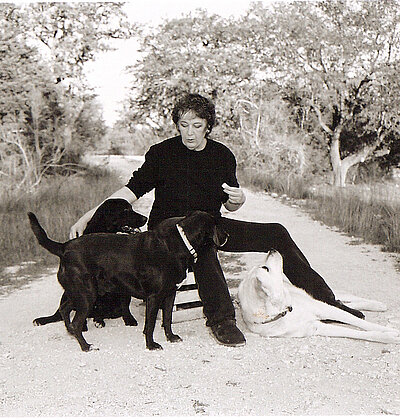Catherine Lee: A POETICS

Galerie Karsten Greve Cologne
Tuesday - Friday 10 am - 6.30 pm
Saturday 10 am - 6 pm
Extended through January 13, 2024.
Opening on Friday, November 3, 2023, 5pm - 8pm
In presence of the artist.
Artist Talk with Catherine Lee
in the course of Art Cologne gallery night 2023
on Friday, November 17, at 7pm
Catherine Lee in conversation with Dr. Daniela Antonin, Director Hetjens-Museum Düsseldorf, and Prof. Dr. Anne-Marie Bonnet, Friedrich Wilhelms-Universität Bonn.
Please register in advance by e-mail to info@galerie-karsten-greve.de
The talk will be held in English.
A poem is its own magic,
but the conjoining of what’s verbal and what’s non-verbal is what matters here.
With the new exhibition A POETICS, Galerie Karsten Greve Cologne honors its more than thirty-year collaboration with American sculptor Catherine Lee (*1950 Pampa, TX). A new group of serial ceramic wall sculptures containing poems written by the artist herself give title to this exhibition and are presented in Europe for the first time. With a total of about 50 works, including selected earlier sculptures, paintings, and works on paper, this first solo exhibition of Catherine Lee in Cologne since 2014 gains a retrospective character.
Although the artist began writing poems early in her life, it is only since the Corona pandemic that Lee began to publish them through her sculptural works. These early poems explore the topics of our time, the beauty of our planet, personal and collective loss, as well as the creative process which anchors her.
When I am cutting them and applying glaze to the letters, that’s where it starts to become a sculpture as well as a poem. That’s where all the magic starts to happen for me. A poem is its own magic, but the conjoining of what’s verbal and what’s non-verbal is what matters here.
Catherine Lee's wall objects have always combined the different genres of relief, sculpture and painting. They are characterized by a reduced formal language and conscious use of materials. The variability and mutability of the materials are of particular interest to the artist. Most of her chosen materials begin in an amorphous state, such as clay, wax, charcoal, oil, mineral pigments, molten metal or glass. Endowing such materials with a sense of our time on earth in discrete and concrete forms, is both the joy and the grave responsibility of all artists of all times, she believes.
The immersive work BOOK OF POEMS consists of a rhythmic series of 42 individual elements made of raku ceramic and copper wire as well as a sound and video installation, which echoes and enlightens the imprinted (and printed) poems, through readings by the artist of each. Every poem was written between
1987 and 2021. The poems’ letters are stamped into clay tablets, fired then filled with glazes using hypodermic needles, and raku fired multiple times. The 38 contained poems explore topics of loss, partly the personal loss of friends, relationships, and time in the broadest sense, but more importantly the loss of
our world as we know it. Climate change has become a climate catastrophe and has always been of particular concern for the artist, who was born into the vast, harsh landscape of north Texas.
Catherine Lee's formal expression leaves room for a variety of associations: While all deal with abstraction and seriality, the ALPHABET bronzes from the early 1990s are dedicated to geographical locations and systems of patination that make identical forms unalike, even as the black basaltic porcelain panels in OBSIDIANS are reminiscent of grave stones or script panels thousands of years old, such as the Codex Hammurapi (Musée du Louvre, Paris), the Babylonian legal texts carved in cuneiform on a diorite column that are among the most important writings of ancient Mesopotamia. In OBSIDIANS, the alternating inscribed black porcelain and the textless white glazed raku panels, called "rests" by the artist, emphasize the principle of sequence in Lee's serial wall works, which underlay the work, the space, and the viewer with a form of rhythmic drumming, while the poems offer their own discourse.
Composed of 256 glazed raku ceramics, the work FINITY is also based on a strict system, here interweaving five forms and five colors. As with other serial works, such as ICE, each object in the series is hand crafted individually and composed of several colored parts in a mosaic-like manner. "Each element is a whole, composed of fragments that remain fragmentary despite their dissolution into one another." Faye Hirsch describes this as a "unity of heterogeneity." OBLITERATI, a 64-page work on paper consisting of charcoal drawings on road-atlas map sections of the entirety of the state of Texas, also continues the idea of the geographical anchoring of the ALPHABET bronzes. Whether with respect to form, color, or material - Catherine Lee's works have an inherent complexity that eludes any obviousness and can only be revealed gradually, and at times never completely.
I love turning the minimal to the maximal – not just staying within that minimal state but trying to bring a complexity to a minimalist aesthetic that resonates in some way that’s not just about purity or calm, but does something more robust.







